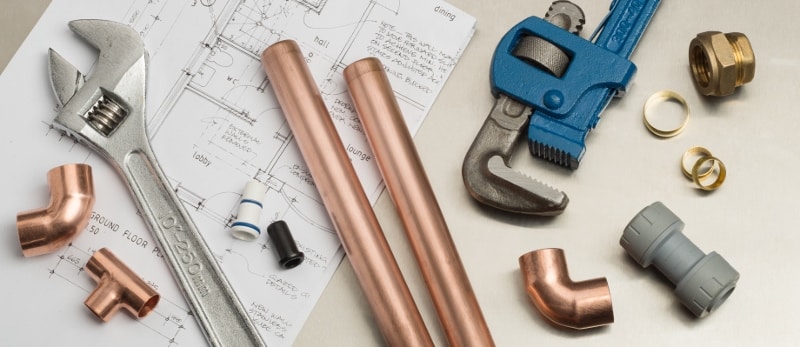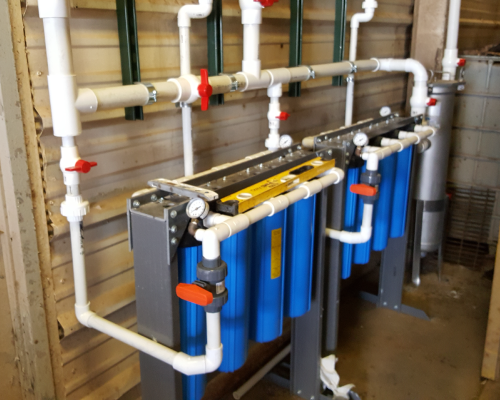Key Information About Your Home's Plumbing System Anatomy
Key Information About Your Home's Plumbing System Anatomy
Blog Article
What're your thoughts and feelings on The Inner Workings of Your Home's Plumbing?

Comprehending exactly how your home's plumbing system works is important for each homeowner. From supplying clean water for alcohol consumption, food preparation, and bathing to safely eliminating wastewater, a properly maintained pipes system is vital for your household's health and wellness and comfort. In this comprehensive guide, we'll explore the complex network that composes your home's pipes and offer suggestions on maintenance, upgrades, and managing usual concerns.
Introduction
Your home's pipes system is greater than simply a network of pipelines; it's a complicated system that guarantees you have accessibility to clean water and efficient wastewater elimination. Recognizing its components and how they work together can assist you stop pricey repairs and ensure whatever runs smoothly.
Fundamental Elements of a Pipes System
Pipelines and Tubes
At the heart of your pipes system are the pipelines and tubes that lug water throughout your home. These can be constructed from numerous materials such as copper, PVC, or PEX, each with its benefits in terms of toughness and cost-effectiveness.
Fixtures: Sinks, Toilets, Showers, and so on.
Components like sinks, toilets, showers, and bathtubs are where water is utilized in your house. Recognizing just how these fixtures connect to the plumbing system helps in identifying problems and preparing upgrades.
Shutoffs and Shut-off Factors
Shutoffs control the flow of water in your plumbing system. Shut-off valves are vital throughout emergency situations or when you need to make repair work, allowing you to isolate parts of the system without interrupting water flow to the entire house.
Water Supply System
Key Water Line
The primary water line connects your home to the municipal supply of water or a private well. It's where water enters your home and is distributed to numerous components.
Water Meter and Pressure Regulator
The water meter measures your water usage, while a stress regulatory authority makes sure that water streams at a risk-free pressure throughout your home's pipes system, protecting against damages to pipes and fixtures.
Cold Water vs. Warm water Lines
Recognizing the distinction in between cold water lines, which supply water straight from the primary, and hot water lines, which lug warmed water from the hot water heater, aids in repairing and preparing for upgrades.
Drain System
Drain Pipes and Traps
Drain pipes lug wastewater far from sinks, showers, and commodes to the drain or sewage-disposal tank. Catches avoid sewer gases from entering your home and additionally catch debris that can create obstructions.
Air flow Pipes
Ventilation pipes permit air right into the drain system, stopping suction that might slow water drainage and trigger catches to empty. Proper ventilation is important for preserving the honesty of your plumbing system.
Value of Appropriate Water Drainage
Making sure correct drain protects against back-ups and water damage. Regularly cleaning up drains and preserving catches can protect against pricey repairs and expand the life of your pipes system.
Water Heater
Types of Water Heaters
Water heaters can be tankless or traditional tank-style. Tankless heating systems warm water on demand, while containers keep heated water for prompt use.
How Water Heaters Link to the Pipes System
Comprehending how hot water heater link to both the cold water supply and warm water circulation lines aids in identifying issues like not enough warm water or leaks.
Upkeep Tips for Water Heaters
Routinely purging your water heater to get rid of sediment, inspecting the temperature setups, and examining for leaks can expand its life expectancy and improve power performance.
Usual Plumbing Problems
Leakages and Their Reasons
Leaks can happen because of maturing pipelines, loosened fittings, or high water pressure. Attending to leakages promptly stops water damages and mold and mildew development.
Obstructions and Obstructions
Obstructions in drains and toilets are typically caused by flushing non-flushable things or a build-up of oil and hair. Utilizing drainpipe screens and being mindful of what decreases your drains pipes can protect against obstructions.
Signs of Plumbing Problems to Watch For
Low water stress, slow-moving drains pipes, foul odors, or abnormally high water costs are indicators of potential plumbing problems that need to be addressed without delay.
Pipes Upkeep Tips
Normal Examinations and Checks
Set up yearly pipes evaluations to catch concerns early. Try to find signs of leakages, rust, or mineral buildup in taps and showerheads.
DIY Upkeep Tasks
Straightforward tasks like cleaning tap aerators, checking for toilet leakages using color tablets, or protecting exposed pipes in chilly environments can avoid major pipes problems.
When to Call a Professional Plumbing Professional
Know when a plumbing concern needs professional experience. Trying complex fixings without proper understanding can bring about more damages and greater repair work expenses.
Upgrading Your Pipes System
Reasons for Updating
Upgrading to water-efficient components or replacing old pipelines can improve water top quality, decrease water expenses, and raise the value of your home.
Modern Pipes Technologies and Their Benefits
Check out technologies like smart leakage detectors, water-saving toilets, and energy-efficient hot water heater that can save money and lower environmental influence.
Cost Factors To Consider and ROI
Compute the upfront prices versus long-term savings when taking into consideration pipes upgrades. Many upgrades spend for themselves with reduced utility costs and less repair work.
Ecological Effect and Preservation
Water-Saving Components and Appliances
Setting up low-flow taps, showerheads, and toilets can considerably reduce water usage without giving up efficiency.
Tips for Decreasing Water Use
Straightforward routines like taking care of leaks promptly, taking shorter showers, and running complete tons of laundry and dishes can preserve water and lower your energy bills.
Eco-Friendly Pipes Options
Consider lasting pipes materials like bamboo for floor covering, which is durable and eco-friendly, or recycled glass for counter tops.
Emergency Preparedness
Actions to Take During a Plumbing Emergency situation
Know where your shut-off valves are located and just how to switch off the supply of water in case of a burst pipeline or major leak.
Relevance of Having Emergency Get In Touches With Convenient
Keep get in touch with information for regional plumbing technicians or emergency situation solutions easily offered for fast response during a pipes situation.
DIY Emergency Fixes (When Relevant).
Momentary fixes like utilizing duct tape to spot a leaking pipe or putting a container under a dripping faucet can minimize damage till a professional plumbing professional arrives.
Verdict.
Understanding the anatomy of your home's pipes system encourages you to keep it efficiently, conserving time and money on repair work. By complying with normal upkeep routines and remaining educated about contemporary pipes technologies, you can ensure your plumbing system runs successfully for years to find.
HOW YOUR PLUMBING SYSTEM WORKS
Which Pipes Do What?
Blue lines = fresh water supply entering the building
Red lines = hot water supply entering the building
Grey lines = pipes carrying waste away from the building and venting pipes carrying gases away from the building (through the roof)
YOUR MAIN PLUMBING SYSTEMS
There are two main plumbing systems that support your home s basic plumbing needs one that brings clean water into your home, and one that sends dirty water away from your home. Connected to the toilet, bath, shower, and other faucets in your home, these two systems keep your water flowing in the right directions.
ACCESSING FRESH WATER
Fresh and clean water is brought into your home through the main water supply line . Filtered through one pipe, this water is pressured to flow into the various fixtures in your home at any given time.
This water can be sourced from a well located on your property, a pond or river (mostly cottages), or, as in most cases, from the city s municipal water treatment centre. However, it is important to note that water that is untreated, such as the water siphoned from ponds or rivers, may not be safe to drink. Personal water supplies always need to be treated for hardness and contaminants before consumed.
MUNICIPAL WATER SUPPLIES
Improve taste and odour
Remove sediment
Eliminate hardness
Reduce chlorine
COLD WATER SUPPLY VS. HOT WATER SUPPLY
Cold water flows into your home or building through the service line, which then distributes hot or cold water to your fixtures. This line is most commonly run through a central column that runs floor to floor. Hot water runs in short and straight pipes as the longer the pipeline, the more heat that will be lost in the transfer. Having shorter pipes also allows residents to access hot water more quickly.
WASTE WATER SYSTEM
Your wastewater system is divided into two parts pipes that send wastewater away from your home and venting pipes that send sewer gas away from your home. Sewage water travels through pipes that flush the water and waste towards local sewers that are operated and managed by your city or town. Most sewer systems rely on gravity to move the wastewater to where it needs to go.
The further away from your toilet or sink, the larger wastewater pipes become. This allows for waste to be disposed of from various parts of your home or business at once without pipe blockages. The angle and flow of these pipes are also essential for keeping your waste pipes clear of build up.
https://harrisplumbing.ca/how-your-home-plumbing-system-works/

HOW YOUR PLUMBING SYSTEM WORKS
Which Pipes Do What?
YOUR MAIN PLUMBING SYSTEMS
There are two main plumbing systems that support your home s basic plumbing needs one that brings clean water into your home, and one that sends dirty water away from your home. Connected to the toilet, bath, shower, and other faucets in your home, these two systems keep your water flowing in the right directions.
ACCESSING FRESH WATER
Fresh and clean water is brought into your home through the main water supply line . Filtered through one pipe, this water is pressured to flow into the various fixtures in your home at any given time.
This water can be sourced from a well located on your property, a pond or river (mostly cottages), or, as in most cases, from the city s municipal water treatment centre. However, it is important to note that water that is untreated, such as the water siphoned from ponds or rivers, may not be safe to drink. Personal water supplies always need to be treated for hardness and contaminants before consumed.
MUNICIPAL WATER SUPPLIES
COLD WATER SUPPLY VS. HOT WATER SUPPLY
Cold water flows into your home or building through the service line, which then distributes hot or cold water to your fixtures. This line is most commonly run through a central column that runs floor to floor. Hot water runs in short and straight pipes as the longer the pipeline, the more heat that will be lost in the transfer. Having shorter pipes also allows residents to access hot water more quickly.
WASTE WATER SYSTEM
Your wastewater system is divided into two parts pipes that send wastewater away from your home and venting pipes that send sewer gas away from your home. Sewage water travels through pipes that flush the water and waste towards local sewers that are operated and managed by your city or town. Most sewer systems rely on gravity to move the wastewater to where it needs to go.
The further away from your toilet or sink, the larger wastewater pipes become. This allows for waste to be disposed of from various parts of your home or business at once without pipe blockages. The angle and flow of these pipes are also essential for keeping your waste pipes clear of build up.
https://harrisplumbing.ca/how-your-home-plumbing-system-works/
As a serious reader on Exploring Your Homes Plumbing Anatomy, I was thinking sharing that piece of content was really helpful. Loved our posting? Please share it. Let other people discover it. I truly appreciate your readership.
Free Estimates Report this page